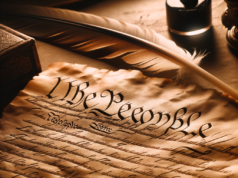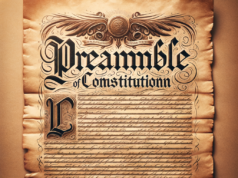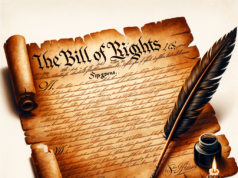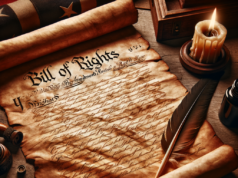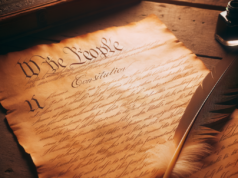
The United States Constitution is the supreme law of the land and sets forth the framework for the governance of the country. It defines the rights and responsibilities of the government and the people, and establishes the fundamental principles upon which the nation is built. Among the many amendments that have been made to the Constitution throughout history, the 23rd Amendment is one that holds significant importance as it has contributed to expanding voter rights to a previously marginalized group of people.
The 23rd Amendment to the US Constitution was ratified on March 29, 1961. It granted the residents of the District of Columbia the right to vote for the President and Vice President of the United States. Prior to this amendment, the residents of the District did not have voting representation in Congress and were not able to cast their vote in national elections. The 23rd Amendment changed that by providing them with the same voting rights as all other US citizens.
The text of the 23rd Amendment reads, “The District constituting the seat of Government of the United States shall appoint in such manner as the Congress may direct: A number of electors of President and Vice President equal to the whole number of Senators and Representatives in Congress to which the District would be entitled if it were a State, but in no event more than the least populous State; they shall be in addition to those appointed by the States, but they shall be considered, for the purposes of the election of President and Vice President, to be electors appointed by a State; and they shall meet in the District and perform such duties as provided by the twelfth article of amendment.”
The purpose of the 23rd Amendment was to ensure that those living in the District of Columbia had a voice in the election of the President and Vice President. Their previous exclusion from the process was seen as an injustice, and the amendment sought to rectify this. As Justice Brennan stated in the case of Gray v. Sanders, “No right is more precious in a free country than that of having a voice in the election of those who make the laws under which, as good citizens, we must live.”
The 23rd Amendment is significant not only for the legal change it brought about but also for the social and political changes that resulted from it. Prior to the amendment, the residents of the District of Columbia were often referred to as outsiders or “stateless,” lacking both the benefits and liabilities of states and their citizens. This exclusion from the governing process weakened their standing in society and impeded their ability to influence policy decisions that affected their daily lives. It created a sense of injustice and discrimination that was felt acutely by those who lived in the District.
The amendment had a significant impact on American history as it challenged the traditional notion of voting rights, which had traditionally been limited to citizens living in states. The amendment extended the democratic principles of citizenship and voting rights beyond the boundaries of the states. It also reflected the broader trend of the civil rights movement of the 1960s, which sought to expand voting rights and other civil liberties to a wider range of people.
After the ratification of the 23rd Amendment, there was a wave of initiatives seeking to address other voting injustices that were occurring across the country. Many states started to introduce laws that made it easier for people to vote. For example, Texas passed a law in 1970 that allowed people to register to vote by mail. In 1971, the 26th Amendment was ratified, lowering the voting age from 21 to 18 years old. These changes helped to widen the democratic process and ensure that as many people as possible were able to have their voices and opinions heard.
Apart from the legal and social changes the 23rd Amendment brought about, it also had an impact on the political landscape of the United States. The amendment created a new group of voters that politicians needed to court, and this brought about more attention to the issues that were affecting the residents of the District of Columbia. It also created a sense of engagement and empowerment, as residents of the District were now able to feel more connected to the political process and the country as a whole.
While the 23rd Amendment was a significant step towards expanding voting rights in the United States, it is important to note that it did not resolve all of the issues related to voter disenfranchisement. Many groups, such as people of color, women, and those living in low-income areas, continued to face significant barriers when it came to voting. As such, the amendment was one part of a broader fight for voting rights that continues to this day. It serves as a reminder of the importance of constantly striving to ensure that everyone has a voice in the governing process.
It is also worth considering how the 23rd Amendment compares to the voting practices of other countries around the world. Many countries have their own unique systems for voting, with some being more inclusive than others. Some countries, like Australia, have compulsory voting laws, while others, such as Canada, maintain a simple first-past-the-post voting system. The United States’ system remains complex and broad, with varied voter requirements and complex rules and regulations.
One area where the United States differs from many other countries is in its handling of prisoners and ex-offenders’ voting rights. In countries like Canada, prisoners and ex-offenders are permitted to vote while incarcerated. In many states in the US, however, those who have been convicted of a felony are barred from voting. This stands in contrast to the idea of expanding voting rights and prioritizing civic engagement, the central principles behind the 23rd Amendment.
In conclusion, the 23rd Amendment to the US Constitution expanded the voting rights of those living in the District of Columbia and had a significant impact on American history. It challenged traditional notions of voting rights and helped to create a more inclusive and democratic society. The amendment reflected the broader trend of the civil rights movement of the 1960s and sparked other initiatives aimed at expanding voting rights. However, it also highlights the ongoing struggle to ensure that everyone has a say in the governing process. It is important to remember that the work towards a truly inclusive and equitable society continues and requires ongoing advocacy and effort.
The 23rd Amendment of the United States Constitution would finally provide citizens of the District of Columbia the right to vote for the President and Vice President offices. Prior to the 23rd Amendment, citizens of Washington, D.C. were not granted the right to vote on the basis that the Capitol is not considered a State of the United States.
Under Article I of the United States Constitution, power was granted to Congress to accept land from the states for the purpose of creating the seat of Government. The District of Columbia was founded in accordance with the provision, as the states of Maryland and Virginia would provide for such land.
Washington, D.C. would, therefore, be controlled by Congress. The 23rd Amendment was proposed by Congress on June 17th, 1960, and finally ratified by the necessary number of states on March 29th, 1961. Washington D.C. citizens would ultimately be able to exercise their new right to vote in a Presidential election in 1964.
Under the provisions included in the 23rd Amendment, the District of Columbia would be restricted to having a number of electors that would reflect the number of electors in the least populated State of the United States. The electors would be appointed by the State and would be considered as electors appointed by a State. The electors would be bound to observe and follow the provisions contained within theTwelfth Amendment.
Currently, the State with the least population numbers in Wyoming. Even without the clause entitling Washington D.C. the number of electors of the least populated state, the number of electors would still be three because of D.C.’s current population. Even though the District of Columbia did not obtain the right to vote in Presidential Elections until 1961, they were provided the right to vote for a mayor and city council in the 1820s. All of the officials were directly appointed by the President of the United States until 1874, when Congress assumed control over the City’s government, as it had done ever since the District’s creation for the exception of the years 1871 until 1874.
The 23rd Amendment provides citizens of D.C. the right to vote for a President and Vice President, but currently still do not have the right to vote for members of the House of Representatives or Senate to Congress. This issue has been a concern and Amendments regarding the right to vote for members of Congress has been introduced, but was not able to obtain the necessary ratification of the required states. However, Congress did allow for a member of the House of Representatives from the District of Columbia to be included but does not have the power of voting. This representative is elected by the residents of Washington, D.C.



